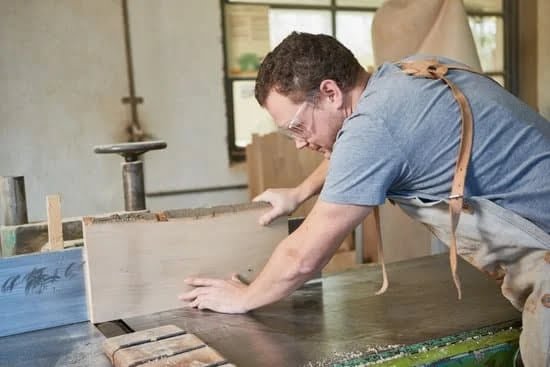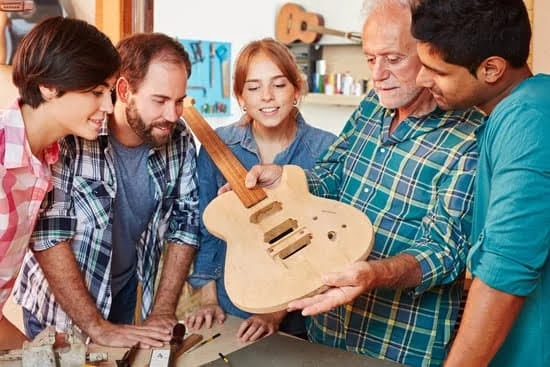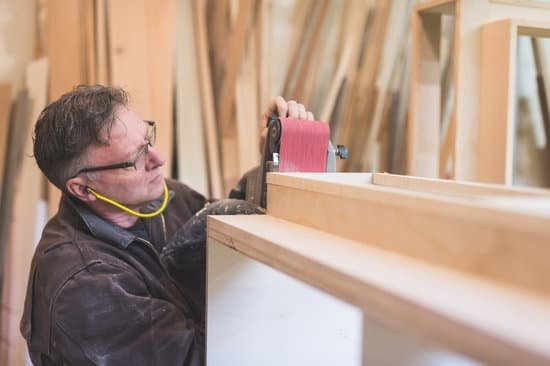Are you looking to add a personal touch to your home decor? Have you ever considered building your own recliner from scratch? In this article, we will explore the appeal of woodworking and guide you through the process of building a custom recliner. From choosing the right materials to troubleshooting common issues, we’ve got you covered.
Building a recliner from scratch offers a unique sense of satisfaction and accomplishment. Not only will you have a one-of-a-kind piece of furniture that suits your style and comfort preferences, but you’ll also gain valuable woodworking skills along the way. Whether you’re a seasoned woodworker or a beginner looking for a challenging project, creating your own recliner can be an exciting and rewarding endeavor.
In the following sections, we will discuss the essential steps and considerations for crafting your very own recliner. From selecting high-quality materials to understanding different styles and designs, as well as providing detailed step-by-step instructions and tips for beginners, this guide will equip you with the knowledge and confidence to take on the challenge of building a recliner from scratch.
So let’s roll up our sleeves, grab our tools, and get ready to embark on this woodworking adventure.
Choosing the Right Materials
When it comes to building a recliner from scratch, choosing the right materials is crucial to the overall quality and durability of the final product. From the frame to the upholstery, each component plays a significant role in the comfort and aesthetic appeal of the recliner. Here’s a guide on selecting high-quality wood and upholstery materials for your DIY recliner project.
Wood Selection
The first step in building a recliner is choosing the right wood for the frame. Hardwood, such as oak, maple, or cherry, is ideal for its strength and durability. When selecting wood for your recliner, consider factors such as grain pattern, color, and stability. It’s important to choose straight, even-grained boards that are free from knots or imperfections that could compromise the structural integrity of the recliner.
Upholstery Materials
The upholstery material you choose will not only impact the comfort of your recliner but also its visual appeal. Look for upholstery fabrics that are durable and easy to clean, especially if you anticipate heavy use of the recliner. Consider factors such as color, texture, and how it complements the wood you’ve chosen for the frame. Additionally, don’t forget about padding materials such as high-density foam or down filling to ensure a comfortable seating experience.
Quality Checks
When sourcing materials for your DIY recliner project, it’s important to inspect them thoroughly for any defects or inconsistencies. Check for warping, cracks, or damage in wooden boards and ensure that upholstery fabric is free from tears or discoloration. By being meticulous in your material selection process, you’ll set yourself up for success in building a high-quality recliner that can stand the test of time.
By understanding how to build a recliner woodworking enthusiasts can create their own custom piece while choosing high-quality wood and upholstery materials. The proper selection of these elements ensures both durability and comfort in your finished product.
Required Tools
When it comes to building your own recliner from scratch, having the right tools is essential for a successful woodworking project. The proper tools ensure that you can work efficiently and produce a high-quality piece of furniture. Before embarking on this endeavor, it’s important to gather all the necessary tools to make the process smoother and more enjoyable.
One of the first essential tools needed for building a recliner is a quality saw for cutting the wood to the desired measurements. A table saw or circular saw is commonly used for this purpose, as they provide clean and precise cuts. Additionally, a drill with various drill bits will be necessary for creating holes and assembling the different components of the recliner frame.
Another crucial tool needed for this project is a sander, which will be used to smooth out any rough edges or surfaces on the wood. This step is important for achieving a professional-looking finish on your recliner. In addition to these power tools, traditional hand tools such as clamps, hammers, and screwdrivers are also essential for assembly and securing components together.
Furthermore, upholstery materials will require specific tools such as staple guns and upholstery needles to attach fabric or leather to the recliner frame securely. It’s also important to have measuring tape, straight edges, and levels on hand to ensure accuracy in your woodworking project. By gathering these essential tools before starting your recliner build, you’ll set yourself up for success and minimize any potential frustration during the construction process.
Research and Planning
When it comes to building a recliner from scratch, the first step is to research and plan which style and design you want to create. There are numerous options available, from traditional to modern designs, and understanding the different styles will help you choose the best fit for your home. Here are some popular styles and designs to consider:
- Traditional Recliners: These classic recliners often have simple, timeless designs with plush cushioning and wood accents. They are perfect for creating a cozy and inviting atmosphere in any living space.
- Modern Recliners: For those who prefer sleek and contemporary furniture, modern recliners offer clean lines, minimalist features, and often come in a variety of upholstery options. They can easily blend into modern home decor.
- Lift Recliners: If accessibility is a concern, lift recliners are designed to assist individuals who may have difficulty getting in and out of traditional chairs. These recliners feature an electric lift mechanism that gently tilts the chair forward or backward.
- Rocking Recliners: A popular choice for nurseries or relaxing spaces, rocking recliners combine the soothing motion of a rocking chair with the comfort of a recliner. They provide an extra level of relaxation.
Once you have decided on the style and design that suits your preferences and needs, it’s important to gather inspiration from various sources such as woodworking magazines, online forums, and even visiting furniture stores to see different types of recliners up close.
Researching different styles will also give you insight into the specific features and mechanisms needed for each design type. Understanding these details will be essential when it comes time to construct the frame and mechanisms for your custom-built recliner.
Remember that planning ahead will save you time during the construction process by ensuring that you have all the necessary materials and tools required for your chosen style of recliner. Understanding the different styles available for recliners is an important step before diving into building one from scratch.
By researching and planning thoroughly at this stage, you’ll set yourself up for success as you move on to constructing your custom-built recliner.
Step-by-Step Instructions
Building a recliner from scratch can be a challenging but rewarding woodworking project. One of the key components of this project is constructing the recliner frame and mechanisms. In this section, we will provide a detailed guide on how to build the frame and mechanisms for a recliner.
To begin, you will need to gather all the necessary materials and tools for this part of the project. As mentioned in the previous section, choosing high-quality wood is essential for the durability and stability of your recliner. Additionally, you will need upholstery materials for the seat and backrest. The required tools include a saw, drill, screwdriver, clamps, and other woodworking essentials.
Once you have all your materials and tools prepared, it’s time to start constructing the frame of your recliner. Start by cutting the wood into the appropriate pieces according to your chosen design or plans. Next, assemble the pieces using screws or wood glue to create the basic structure of the recliner. Pay close attention to measurements and ensure that everything is level and secure.
After constructing the frame, it’s important to focus on the reclining mechanism. This can vary depending on the design you’ve chosen for your recliner. Whether it’s a lever or knob mechanism, carefully install and test it to ensure smooth movement and functionality. Taking your time during this step is crucial for creating a comfortable and functional reclining chair.
By following these step-by-step instructions, you will be well on your way to building a sturdy recliner frame complete with functional mechanisms. Keep in mind that precision and attention to detail are key components in successfully building a quality piece of furniture such as a recliner.
Upholstery and Finishing
Once the frame and mechanisms of the recliner have been successfully constructed, the next crucial step is to upholster and finish the recliner to give it a professional and polished look. Upholstery is not just about aesthetics, but also about ensuring comfort and durability. Here are some tips on how to tackle this important aspect of building a recliner.
Choosing the Right Upholstery Material
Selecting the appropriate upholstery material is key to achieving both comfort and style in your recliner. Consider factors such as durability, ease of cleaning, and overall aesthetic appeal when choosing the fabric or leather for your recliner. Keep in mind that different materials may require different techniques for upholstering, so be sure to research the best practices for working with your chosen upholstery material.
Upholstering Techniques
When upholstering your recliner, take care to ensure a snug fit without any wrinkles or loose areas. This may involve using techniques such as stapling, sewing, or tucking fabric in certain areas. Consider consulting tutorials or seeking advice from experienced upholsterers to learn the best techniques for achieving professional results.
Finishing Touches
Once the upholstery work is complete, it’s time to focus on finishing touches that will elevate the overall look of your recliner. This may involve adding decorative elements such as nailhead trim, piping, or tufting. Additionally, applying a high-quality finish to any exposed wood surfaces can enhance the overall appearance and provide protection against wear and tear over time.
By paying attention to these details during the upholstery and finishing process, you can ensure that your handmade recliner not only looks impressive but also stands up to regular use over time. With patience and attention to detail, you can achieve a professional-looking result that will be both functional and visually appealing.
Troubleshooting
Building a recliner from scratch can be a rewarding experience, but it also comes with its fair share of challenges. As you embark on this woodworking project, it’s important to be prepared for common issues that may arise during the building process. By understanding these potential problems and having solutions at hand, you can tackle them with confidence and ensure a successful outcome for your DIY recliner.
One common issue encountered when building a recliner is difficulty in getting the reclining mechanism to function smoothly. This could be due to misalignment or improper installation of the parts. To solve this problem, carefully review the instructions provided with the reclining mechanism and make any necessary adjustments. It’s also helpful to double-check all connections and ensure that everything is aligned properly before proceeding.
Another common issue is achieving the perfect balance between comfort and stability in the recliner frame. If you find that the frame feels unsteady or wobbly, consider reinforcing it with additional support or braces. Additionally, pay close attention to weight distribution and make any necessary adjustments to ensure that the finished recliner provides both comfort and stability for its user.
Lastly, upholstery-related issues such as wrinkling or puckering of fabric can also arise during the finishing stages of building a recliner. To address this, take your time when upholstering and use proper techniques to minimize wrinkles. Depending on the type of fabric used, it may be beneficial to use a steam iron or other methods to smooth out any imperfections in the upholstery.
By being aware of these common issues and knowing how to solve them, you can overcome challenges with confidence as you build your own recliner through woodworking.
| Common Issue | Solution |
|---|---|
| Difficulty getting reclining mechanism to function smoothly | Carefully review instructions, check connections, and realign parts if necessary. |
| Lack of stability in the recliner frame | Reinforce frame with additional support or braces, adjust weight distribution for balance. |
| Upholstery wrinkling or puckering | Take time during upholstering, use proper techniques, consider using steam iron for smoothing out fabric. |
Tips for Beginners
Building a recliner from scratch can be an incredibly rewarding project, allowing you to create a piece of furniture that is not only functional but also tailored to your personal style and comfort. For first-time woodworking enthusiasts, this may seem like a daunting task, but with the right advice and guidance, it can be an achievable and enjoyable endeavor.
To help you get started on building your own recliner, here are some helpful tips for beginners:
- Start with simple projects: If you’re new to woodworking, it’s essential to begin with smaller, less complex projects before tackling something as intricate as a recliner. This will allow you to develop your skills and gain confidence in handling different tools and materials.
- Invest in quality tools: While it may be tempting to opt for cheaper or second-hand tools, investing in high-quality woodworking tools will make a significant difference in the outcome of your recliner. Essential items include a circular saw, chisels, drills, clamps, and sanders.
- Take your time with research: Before diving into the project, take the time to research different styles and designs of recliners. Understand the mechanisms involved in creating a reclining chair and familiarize yourself with upholstery techniques.
By following these tips for beginners, you can set yourself up for success when undertaking the challenge of building a recliner from scratch. Remember that patience and perseverance are key when embarking on any woodworking project. With dedication and attention to detail, you’ll soon find yourself enjoying the fruits of your labor as you relax in a recliner crafted entirely by your own hands.
Conclusion
In conclusion, building a recliner from scratch can be a rewarding and fulfilling woodworking project for enthusiasts of all skill levels. By carefully selecting high-quality materials and using the right tools, individuals can create a personalized and well-crafted piece of furniture that reflects their unique style and preferences. Through thorough research, planning, and following step-by-step instructions, even beginners can successfully complete this challenging but achievable project.
As discussed in this article, understanding the different styles and designs available for recliners is essential for creating a customized piece that meets individual needs and tastes. Additionally, learning how to troubleshoot common issues that may arise during the building process is crucial for ensuring a smooth construction experience. Upholstering and finishing tips provided here will also help woodworkers achieve a polished and professional look for their recliner.
Finally, to those considering taking on the challenge of building their own recliner, it’s important to remember that patience and dedication are key in accomplishing this woodworking project. While it may seem daunting at first, with the right guidance and mindset, individuals can successfully build a beautiful piece of furniture that they can be proud of for years to come.
So don’t hesitate to embark on this rewarding journey – follow the provided tips, stay focused, and enjoy the process of creating your very own recliner masterpiece.
Frequently Asked Questions
What Material Is a Recliner Made Out Of?
A recliner can be made out of various materials, including but not limited to leather, fabric, vinyl, and microfiber. The frame is typically made of wood or metal to provide support and stability, while the upholstery can vary in texture, color, and durability depending on the manufacturer and intended use of the recliner.
How to Design a Recliner?
Designing a recliner involves considering both form and function. Factors such as the size and shape of the chair, the angle of recline, the type of footrest mechanism, and the overall aesthetic appeal are all important elements to consider during the design process. Comfort, ergonomics, and ease of use also play a significant role in creating a well-designed recliner.
What Are the Parts of a Recliner Called?
The parts of a recliner have specific names that correspond to their function within the chair. These include the backrest, seat cushion, armrests, footrest or ottoman, frame or base, handle or button for reclining mechanism activation, and padding or foam for comfort.
Understanding each part and its role in the overall functionality of the recliner is essential for maintenance and repair purposes.

Hi everyone! I’m a woodworker and blogger, and this is my woodworking blog. In my blog, I share tips and tricks for woodworkers of all skill levels, as well as project ideas that you can try yourself.





